Server-side tracking represents the future of digital analytics, offering businesses unprecedented control over data collection while addressing the mounting challenges of privacy regulations, browser restrictions, and ad blocker proliferation. Unlike traditional client-side methods that are increasingly unreliable, server-side tracking provides up to 37% improvement in data accuracy and ensures full compliance with GDPR and CCPA requirements through centralized data processing and enhanced security measures. This comprehensive guide explores advanced implementation strategies, technical architectures, industry-specific applications, and future-proofing techniques that will transform your analytics infrastructure into a competitive advantage.
The Evolution of Digital Tracking: From Browser Dependency to Server Control
The digital tracking landscape has fundamentally shifted from browser-dependent client-side methods to sophisticated server-controlled architectures. Traditional tracking faces unprecedented challenges as Apple’s Intelligent Tracking Prevention blocks third-party cookies by default, Firefox implements Enhanced Tracking Protection, and Chrome’s Privacy Sandbox initiative phases out cross-site tracking. These browser restrictions, combined with 20% ad blocker usage rates and increasing privacy regulation enforcement, have created a 25% data loss problem for businesses relying solely on client-side tracking.

Server-side tracking emerged as the definitive solution, shifting data collection from the unpredictable browser environment to controlled server infrastructure. This paradigm change enables businesses to bypass ad blockers entirely, reduce data loss from 25% to just 5%, and improve website performance by up to 65% through reduced client-side script execution. The transformation represents more than a technical upgrade—it’s a strategic necessity for maintaining competitive data analytics in an increasingly privacy-conscious digital ecosystem.
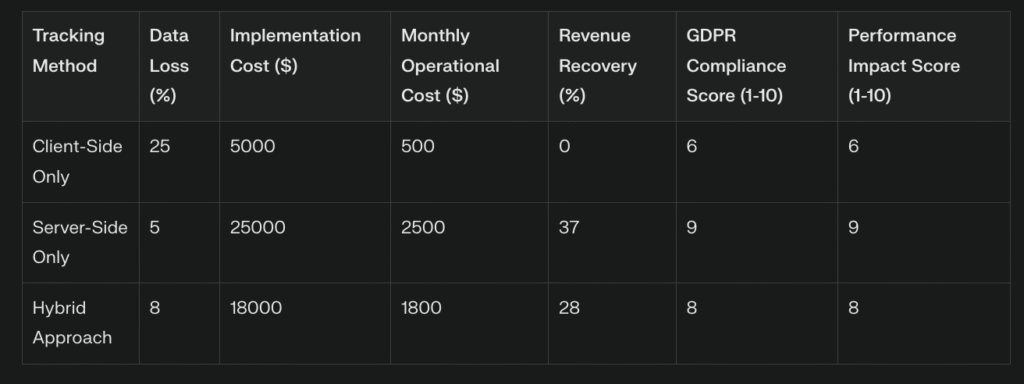
Core Server-Side Infrastructure Components
Server-side tracking architecture consists of several critical components that work in concert to provide reliable, scalable, and secure data collection. The foundation begins with data layer implementation, serving as the canonical source of truth for user interactions. Modern implementations follow Google’s Enhanced Ecommerce specification to ensure compatibility across multiple analytics platforms.
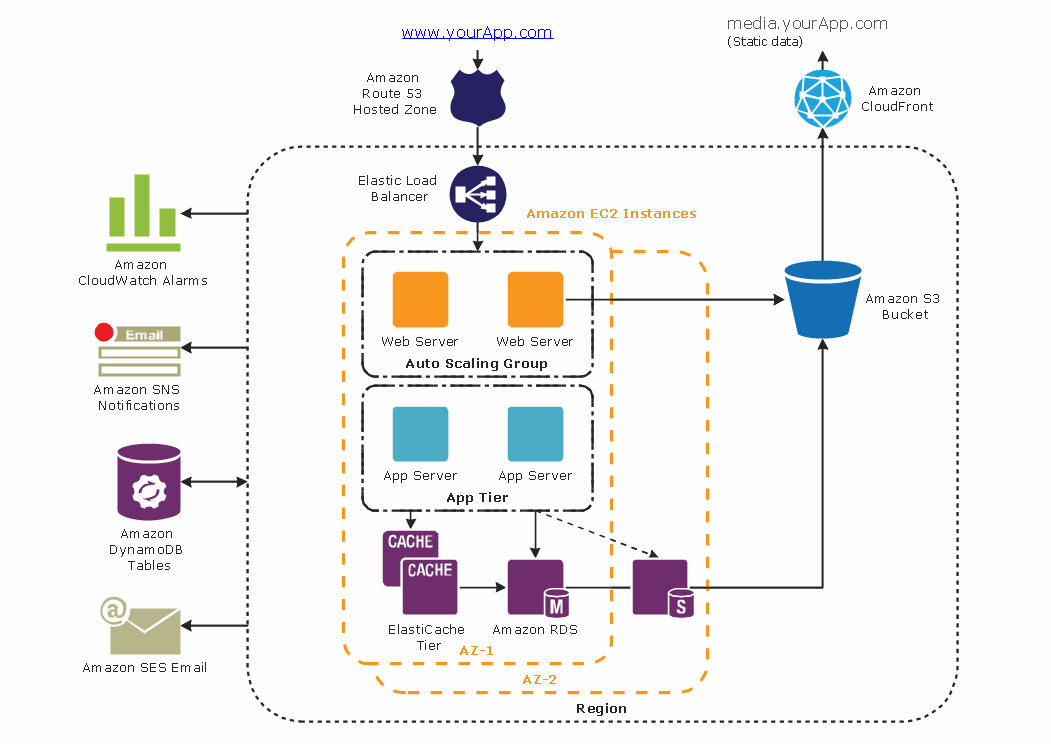
The server infrastructure typically employs auto-scaling container orchestration using platforms like Amazon Elastic Container Service (ECS) or Google Cloud Run to handle variable traffic loads efficiently. Load balancing and failover mechanisms ensure continuous data collection even during high-traffic events, while real-time monitoring systems provide immediate alerts for any disruptions in the data pipeline.
Advanced Data Processing Workflows
Server-side tracking implements sophisticated data processing workflows that transform raw interaction data into actionable insights. The process begins when user interactions trigger server-side scripts that capture, validate, and enrich data before forwarding to destination platforms. Data enrichment capabilities include IP geolocation, device fingerprinting, and cross-device user identification that extends beyond traditional cookie limitations.
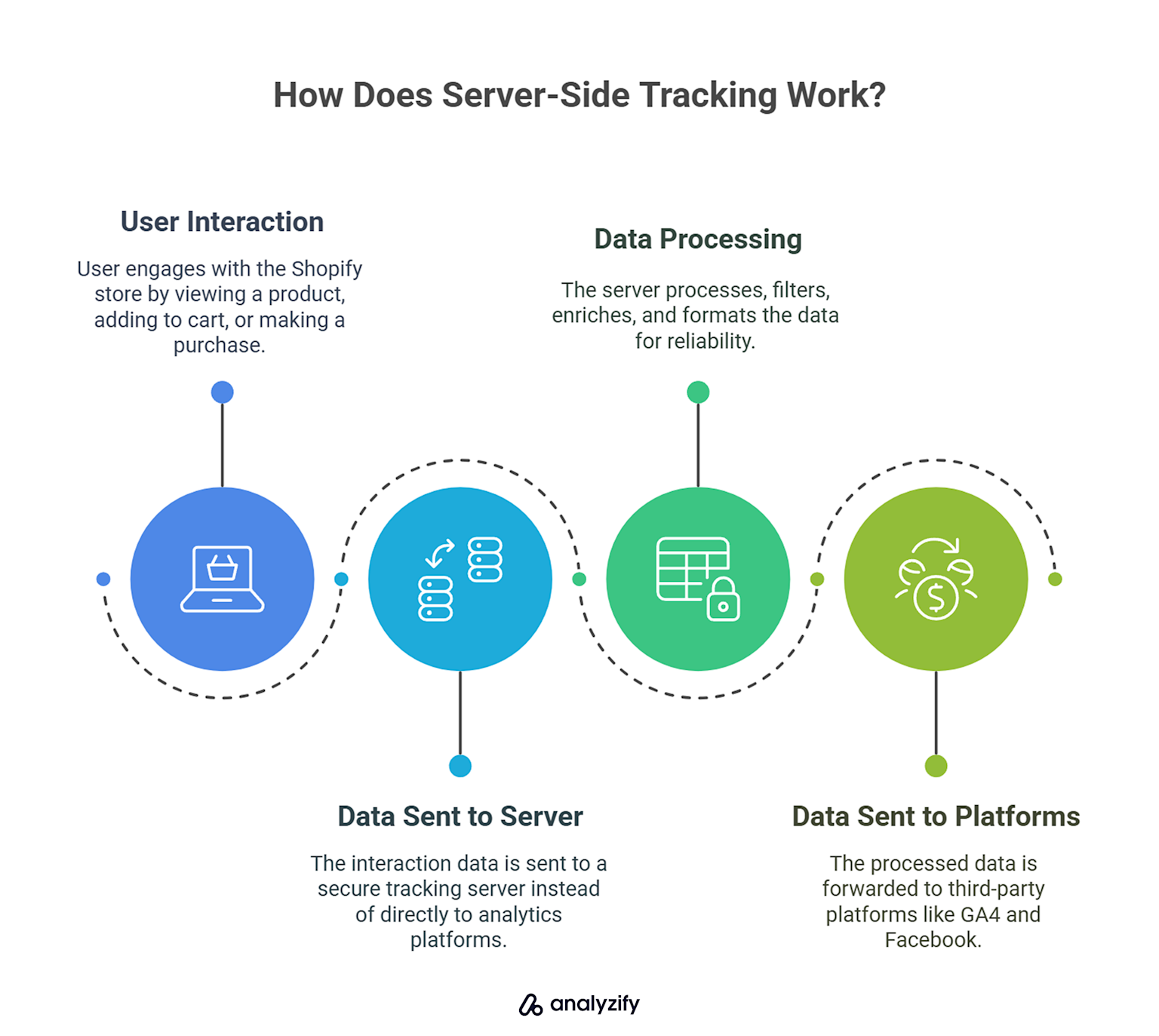
The system employs multi-stage data validation to ensure accuracy and completeness. Real-time data deduplication algorithms prevent duplicate events from skewing analytics, while custom attribution models provide more accurate conversion tracking across complex customer journeys. Advanced filtering mechanisms allow businesses to exclude personally identifiable information (PII) or anonymize sensitive data before sharing with third-party platforms.
Performance Optimization Strategies
Server-side tracking delivers substantial performance improvements through reduced client-side script execution. Traditional client-side implementations often load multiple third-party scripts that increase page load times by up to 7 seconds, while server-side approaches reduce total blocking time and minimize layout shifts by centralizing script execution on optimized server infrastructure.
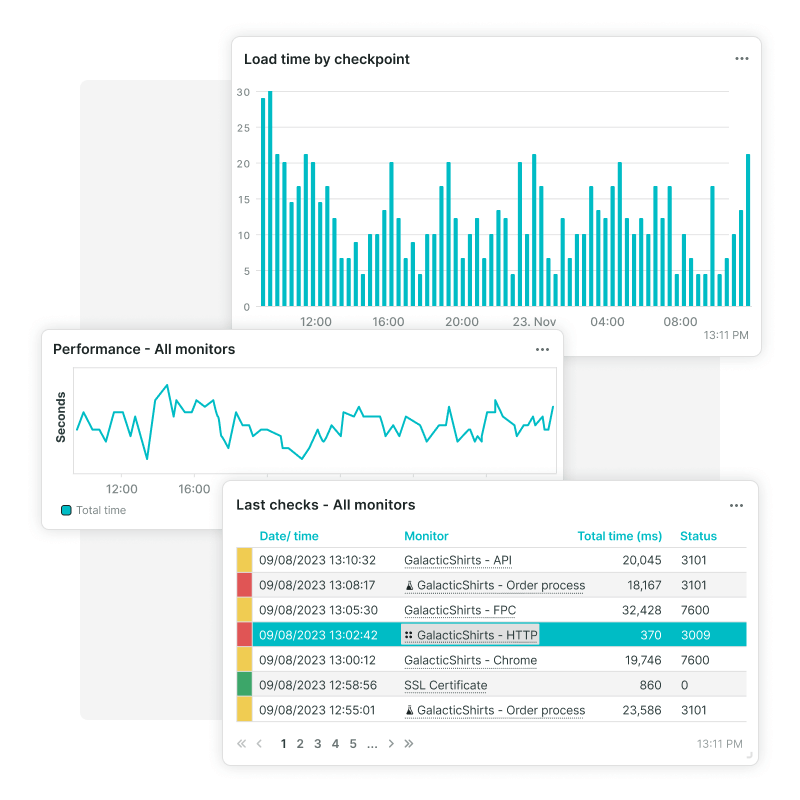
Asynchronous processing capabilities ensure that data collection doesn’t impact user experience, while intelligent caching strategies reduce server response times. Content delivery network (CDN) integration distributes processing load geographically, ensuring low-latency data collection regardless of user location. Database optimization techniques including query indexing and connection pooling maintain consistent performance even under high-volume traffic conditions.
Privacy Compliance and Data Governance Excellence
GDPR and CCPA Compliance Framework
Server-side tracking provides superior privacy compliance capabilities through centralized data control mechanisms that enable businesses to implement privacy by design principles effectively. Unlike client-side methods that expose data to multiple third parties, server-side implementations allow granular control over data sharing and real-time consent management across all platforms.

Data minimization strategies can be implemented at the server level, ensuring only necessary information is collected and processed. Purpose limitation enforcement prevents data usage beyond explicitly consented purposes, while automatic data retention policies ensure compliance with storage limitation requirements. Cross-border data transfer protections address GDPR’s territorial restrictions by enabling EU-hosted server infrastructure for European user data.
Advanced Security and Data Protection
Server-side tracking implements enterprise-grade security measures including end-to-end encryption for all data transmissions and secure authentication protocols for platform access. Role-based access controls ensure that only authorized personnel can access sensitive analytics data, while comprehensive audit logs provide full transparency into data handling practices.
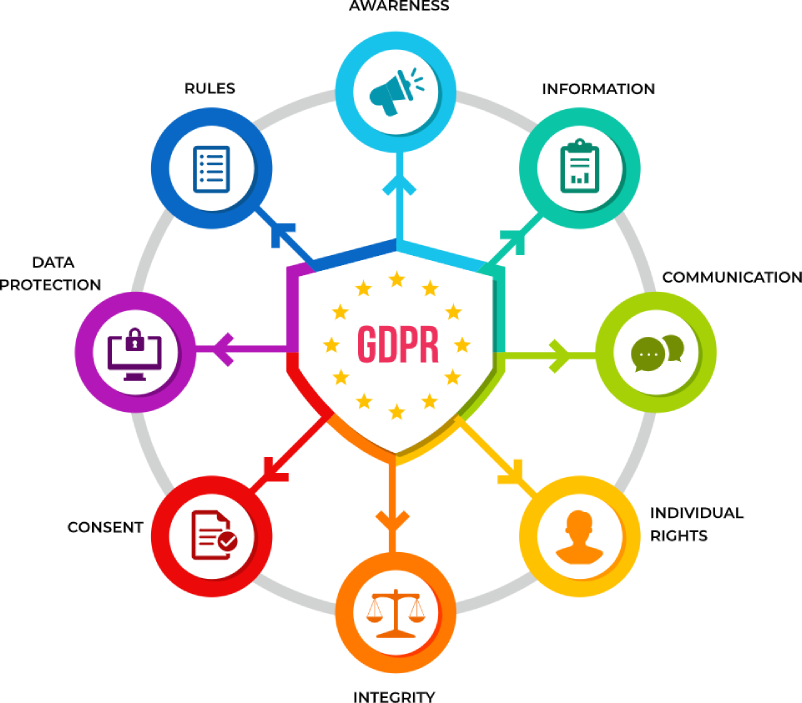
Data anonymization techniques including SHA-256 hashing for PII and IP address masking reduce privacy risks while maintaining analytical utility. Regular security audits and vulnerability assessments ensure the infrastructure remains protected against emerging threats. Disaster recovery protocols and automated backup systems prevent data loss and ensure business continuity.
Industry-Specific Implementation Strategies
E-commerce and Retail Optimization
E-commerce businesses achieve exceptional results with server-side tracking, experiencing average conversion rate improvements of 15-25% through enhanced attribution accuracy. Session enrichment capabilities enable user recognition beyond typical 24-hour cookie limitations, allowing businesses to recover abandoned cart conversions up to 100+ days later.

Advanced product analytics track customer behavior across the entire purchase funnel, from initial product views to post-purchase engagement. Real-time inventory integration enables dynamic product recommendations based on availability and customer preferences. Cross-device purchase attribution provides accurate revenue tracking for customers who browse on mobile but purchase on desktop.
SaaS and Technology Platforms
Software-as-a-Service companies leverage server-side tracking for comprehensive user journey analysis across complex multi-step workflows. API-layer tracking implementation captures user interactions at the application level, providing more accurate usage analytics than traditional browser-based methods. Feature adoption tracking enables product teams to understand which capabilities drive user engagement and retention.
Multi-tenant data isolation ensures customer data privacy while enabling aggregate analytics for product development. Real-time user behavior analysis supports in-application personalization and predictive churn modeling. Integration APIs allow seamless data sharing with customer relationship management (CRM) and marketing automation platforms.
Financial Services and Healthcare
Highly regulated industries benefit significantly from server-side tracking’s enhanced compliance capabilities. Financial services organizations achieve 89% adoption rates due to strict data protection requirements and the need for accurate transaction attribution. Healthcare providers implement server-side solutions to maintain HIPAA compliance while gathering essential patient interaction analytics.
Audit trail capabilities provide complete transparency into data handling processes, essential for regulatory compliance reporting. Data residency controls ensure sensitive information never leaves designated geographic boundaries. Advanced encryption standards protect data both in transit and at rest, meeting the most stringent industry security requirements.
Advanced Implementation Methodologies
Custom Development vs. Managed Solutions
Organizations face a critical decision between custom server-side implementations and managed service solutions. Custom development offers maximum flexibility but requires significant technical resources and ongoing maintenance commitments. Managed solutions like Elevar, TAGGRS, and Stape provide plug-and-play implementations with professional support and maintenance.
Development resource requirements for custom implementations include server-side programming expertise, API integration capabilities, and ongoing platform maintenance. Total implementation costs range from €100-300 monthly for managed solutions to $25,000+ for custom development, with additional monthly operational costs varying based on data volume and processing complexity.
Google Tag Manager Server-Side Implementation
Google Tag Manager Server-Side Container provides a familiar interface for marketers while delivering server-side capabilities. The implementation involves deploying containers to Google Cloud Platform or alternative hosting providers like Amazon Web Services or Microsoft Azure. Configuration complexity requires understanding tag, trigger, and variable relationships in the server-side context.
Client name configuration enables custom event processing before data reaches third-party platforms. Variable enrichment capabilities allow server-side data enhancement including geographic information and device categorization. Template community contributions provide pre-built integrations for popular marketing platforms.
Hybrid Architecture Strategies
Hybrid tracking implementations combine client-side ease of deployment with server-side data control, offering a balanced approach for organizations transitioning from traditional tracking methods. First-party collector architectures maintain browser-based data collection while routing data through controlled servers before external platform delivery.
Progressive migration strategies enable gradual transition from client-side to server-side implementations, reducing implementation risk and allowing performance comparison. A/B testing capabilities help organizations validate server-side tracking accuracy against existing client-side implementations before full deployment.
Cost-Benefit Analysis and ROI Optimization
Server-side tracking implementations deliver measurable return on investment through reduced data loss and improved marketing efficiency. Revenue impact analysis demonstrates that businesses can recover up to $40,000 monthly in previously lost conversions for every 100,000 monthly visitors. Implementation costs typically pay for themselves within 3-6 months through improved advertising attribution and conversion optimization.
Total cost of ownership calculations include initial setup expenses, monthly hosting costs, and ongoing maintenance requirements. Google Cloud Platform hosting costs approximately €100-300 monthly for most implementations, while data processing fees remain negligible even for high-volume sites processing over 500,000 monthly visitors.
Performance Marketing ROI Enhancement
Advertising platform optimization through server-side tracking delivers significant ROAS improvements by providing complete conversion data to machine learning algorithms. Facebook Conversions API implementation reduces signal loss by up to 15%, while Google Enhanced Conversions improves attribution accuracy across devices and browsers.

Marketing budget optimization becomes more precise with accurate conversion attribution, enabling better campaign performance evaluation and budget allocation decisions. Customer lifetime value analysis improves through comprehensive customer journey tracking, supporting long-term marketing strategy development.
Future Trends and Technology Evolution
The future of server-side tracking includes artificial intelligence integration for predictive analytics and automated optimization. Machine learning algorithms will analyze user behavior patterns to predict conversion probability and optimize marketing campaigns automatically. Real-time personalization engines will leverage server-side data processing to deliver individualized user experiences across all digital touchpoints.
Blockchain technology integration promises enhanced data transparency and user consent management, enabling decentralized data ownership models while maintaining marketing analytics capabilities. Edge computing deployment will bring server-side processing closer to users, reducing latency and improving real-time personalization capabilities.
Industry Standardization and Adoption Trends
Industry-wide adoption rates continue accelerating, with server-side tracking becoming the standard by 2025. Financial services lead adoption at 89%, followed by e-commerce at 78% and healthcare at 71%. Education and manufacturing sectors show strong planned implementation rates of 42% and 47% respectively, indicating broad industry acceptance.

Regulatory compliance requirements will drive further adoption acceleration as privacy laws become more stringent and enforcement increases globally. Cross-channel tracking capabilities will expand to encompass offline interactions, IoT device data, and voice interface analytics, creating truly omnichannel customer insights.
Implementation Best Practices and Success Strategies
Successful server-side tracking implementation requires careful planning and execution across multiple technical domains. Data architecture design must account for scalability requirements, geographic distribution, and disaster recovery capabilities. API endpoint optimization ensures reliable data delivery even during high-traffic periods or third-party platform outages.
Testing and validation protocols should include data accuracy verification, performance impact measurement, and compliance audit procedures. Gradual rollout strategies minimize implementation risks while enabling iterative improvements based on real-world performance data.
Organizational Change Management
Cross-functional collaboration between marketing, development, and compliance teams is essential for successful server-side tracking deployment. Training programs ensure team members understand new capabilities and compliance requirements. Documentation standards maintain implementation consistency and enable knowledge transfer as teams evolve.
Performance monitoring frameworks should track both technical metrics and business outcomes, enabling continuous optimization of the server-side tracking infrastructure. Regular review cycles ensure configurations remain optimized as business requirements evolve and new platforms are integrated.
Embracing the Server-Side Future of Cookie Compliance
Server-side tracking represents the definitive evolution of digital analytics, addressing the fundamental limitations of client-side methods while enabling unprecedented privacy compliance and data accuracy. Organizations implementing server-side solutions gain competitive advantages through improved data quality, enhanced customer insights, and superior marketing performance. The technology’s rapid industry adoption and continuous innovation make early implementation essential for long-term success.
The transition to server-side tracking requires strategic planning, technical expertise, and organizational commitment, but the return on investment through improved data accuracy, privacy compliance, and marketing optimization justifies the implementation effort. As privacy regulations intensify and browser restrictions expand, server-side tracking will transition from competitive advantage to business necessity, making now the optimal time for implementation.